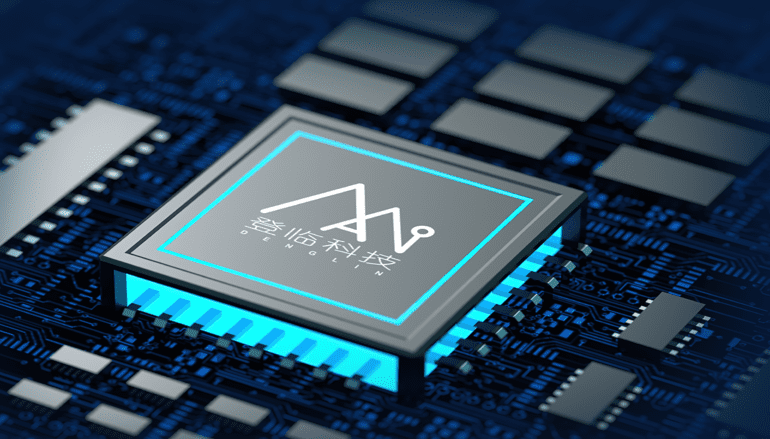TL;DR:
- Chinese GPU developers seize opportunities in the domestic market due to U.S. restrictions on AI and HPC exports.
- Nvidia currently dominates AI hardware market, but Chinese firms like ILuvatar CoreX and Moore Threads aim to expand their niche.
- Collaborations with cloud providers like Bidu help Chinese companies deploy LLM services.
- Enterprises such as DenglinAI, Vast AI Tech, and MetaX launch products for large language models.
- Shift observed from gaming hardware to a more lucrative data center focus, exemplified by Moore Threads.
- Some Chinese companies, like Alibaba’s T-Head and Enflame, explore non-GPU solutions for a competitive edge.
- Nvidia’s dominance educates market, but restricts other players globally.
- Optimism persists among Chinese firms as Nvidia’s success paves the way for growth in CPU-to-GPU shift.
- Recent quarter results show Nvidia’s revenue surpassing Intel’s, especially in the data center sector.
Main AI News:
Despite the formidable hold Nvidia maintains on the market for high-end artificial intelligence (AI) and high-performance computing (HPC) exports, Chinese GPU developers are actively discerning avenues for growth within their national borders. The stringent U.S. restrictions imposed on AI hardware and HPC exports to China have catalyzed a prime opportunity for domestic GPU manufacturers to step into the void. As industry behemoth Nvidia commands the current landscape of AI hardware, the likes of ILuvatar CoreX, Moore Threads, and BirenTech from China are meticulously refining their hardware and software capabilities, poised to potentially transcend niche status, according to a comprehensive report by DigiTimes.
Intriguingly, collaborations between Chinese firms and local cloud computing providers, such as Bidu, have gained momentum, with companies like ILuvatar CoreX, Moore Threads, and BirenTech making strategic inroads into the market by offering Large Language Model (LLM) services. Simultaneously, enterprises like DenglinAI, Vast AI Tech, and MetaX have cultivated sophisticated products designed for seamless integration with expansive language models right from inception. A notable strategic pivot is exemplified by Moore Threads, which has transitioned its focus from the realm of gaming hardware to the more lucrative domain of data center operations.
An exploration of the competitive landscape reveals that certain Chinese enterprises are embarking on innovative trajectories to establish their presence in the AI-accelerated computing sector. Alibaba’s subsidiaries, T-Head, and Enflame, are emblematic of this trend as they venture into non-GPU solutions to secure their foothold in the market. This diversification strategy not only distinguishes them but also imbues them with heightened competitiveness. Additionally, Alibaba’s unique advantage in developing chips for its own data centers positions the company for success, contingent on delivering optimal performance while managing power efficiency.
Navigating the current landscape proves to be a multifaceted challenge for these pioneering Chinese entities. While Nvidia’s undisputed market supremacy serves as an invaluable educational platform, augmenting awareness about the indispensable role of compute GPUs in the realms of AI and HPC, it also imposes constraints on the landscape, leaving minimal maneuvering room for other stakeholders, particularly on the global stage. Despite these challenges, optimism prevails among these companies, grounded in the belief that Nvidia’s accomplishments are essentially paving the way for their future growth as the industry paradigm experiences a transition from CPUs to compute GPUs.
Unveiling the latest financial results of Intel and Nvidia for the most recent quarter further accentuates the value of GPUs in the emerging AI sector. Nvidia’s staggering revenue, amounting to $13.5 billion in Q2 FY2024, underscores the supremacy of its offerings. In a comparative context, Intel’s revenue settled at $12.9 billion. However, a deeper analysis reveals the magnitude of Nvidia’s stride, with its data center revenue surpassing the $10 billion mark, more than doubling Intel’s data center revenue of $4 billion.
Conclusion:
The Chinese GPU market is undergoing a transformative phase as local innovators strategically navigate the landscape amidst Nvidia’s stronghold. Collaborations, diversification, and a shift in focus are redefining the market, while the shadow of Nvidia’s dominance simultaneously acts as a learning platform and a constraint. This evolving landscape signifies a potential paradigm shift in the broader market dynamics, with Chinese GPU firms poised to capitalize on emerging AI opportunities.

